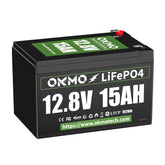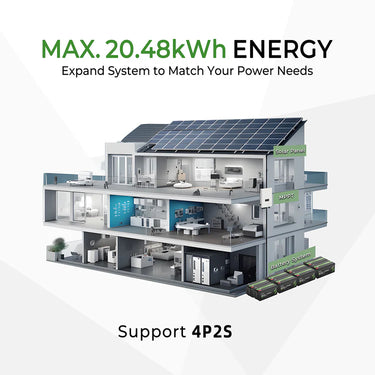The Ultimate Guide to Marine Battery Selection: Lead Acid vs. Lithium vs. LiFePO4

Marine batteries are the heart of a boat’s power system, especially for trolling motors, electronics, and auxiliary systems. With so many battery types on the market—lead acid, traditional lithium-ion (Li-ion), and lithium iron phosphate (LiFePO4)—how do you choose the best option? This guide dives deep into the characteristics of these three mainstream battery technologies and addresses a critical paradox: Why are traditional lithium batteries (e.g., NMC/NCA) discouraged for marine use, while LiFePO4 batteries—also a type of lithium battery—are hailed as the ultimate choice for marine applications?
I. Technical Comparison of Three Marine Battery Types
| Feature | Lead Acid Battery | Traditional Lithium-ion (Li-ion) | LiFePO4 Battery |
|---|---|---|---|
| Energy Density (Wh/kg) | 30-50 | 150-250 | 90-120 |
| Cycle Life (cycles) | 300-500 | 500-1000 | 3000-15000 |
| Weight (12V/100Ah) | ~30 kg | ~15 kg | ~13 kg |
| Full Charge Voltage (12V) | 12.7V | 12.8V (3.2V/cell ×4) | 14.4V (3.6V/cell ×4) |
| Depth of Discharge (DoD) | 50% | 80% | 100% |
| Low-Temp Performance (-20°C) | 50% capacity loss | 70% capacity loss | 20% capacity loss |
| Thermal Runaway Risk | Low | High (flammable electrolyte) | Extremely low (heat-resistant) |
| Eco-Friendliness | Lead pollution | Cobalt/nickel pollution | Non-toxic, recyclable |
| Initial Cost (100Ah) | 100−200 | 500−800 | 800−1200 |
II. Why Traditional Lithium Batteries (e.g., NMC/NCA) Are Not Recommended
1. Safety Risks: Flammability and Thermal Runaway
-
Traditional lithium batteries (e.g., NMC, NCA) use organic solvent-based electrolytes, which are prone to thermal runaway under high temperatures or physical damage, leading to fires or explosions. Marine environments—with constant moisture, vibration, and salt exposure—amplify these risks.
-
Case Study: In 2021, the U.S. Coast Guard reported multiple yacht fires caused by short circuits in NMC lithium batteries.
2. Short Cycle Life and Poor Cost Efficiency
-
With only 500-1,000 cycles, traditional lithium batteries degrade rapidly under high-current discharges (e.g., sustained 30A+ loads from trolling motors), resulting in higher long-term costs compared to lead acid and LiFePO4.
3. Poor Low-Temperature Performance
-
Below 0°C, NMC/NCA batteries suffer severe capacity loss, making them unsuitable for cold-water fishing or polar expeditions.
4. Voltage Compatibility Issues
-
Traditional lithium cells have a higher voltage range (3.6-3.7V per cell). A 12V system with four cells in series can reach 14.4V at full charge, potentially exceeding the voltage tolerance of older trolling motors and damaging circuits.

III. Why LiFePO4 Batteries Are the Ultimate Marine Solution
Despite being a lithium-based technology, LiFePO4 batteries overcome the flaws of traditional lithium batteries due to their unique chemistry:
1. Unmatched Safety: Zero Thermal Runaway Risk
-
LiFePO4 cells remain stable even under extreme conditions. They do not release oxygen during punctures or short circuits, making them fireproof and explosion-proof—a critical feature for marine safety standards (e.g., ABYC).
2. Ultra-Long Lifespan and Cost Savings
-
With 2,000-5,000 cycles, LiFePO4 batteries last 5x longer than lead acid. For example, if charged twice weekly, a LiFePO4 battery can last 20+ years, while lead acid batteries require replacement every 2-3 years.
3. Wide Temperature Tolerance
-
Operating range: -20°C to 60°C. Even in freezing conditions, LiFePO4 retains 80% capacity, ideal for winter fishing or Arctic voyages.
4. 100% Depth of Discharge and Lightweight Design
-
LiFePO4 allows full discharge (DoD 100%), delivering twice the usable capacity of lead acid. At half the weight, it significantly improves boat payload efficiency.
5. Smart Compatibility
-
Modern LiFePO4 batteries integrate advanced Battery Management Systems (BMS) to monitor voltage, temperature, and current in real time. Many models support Bluetooth connectivity for remote management via smartphone apps.
IV. How to Choose the Right Marine Battery
1. Match Capacity to Usage
-
Small boats/short trips: 12V 50Ah LiFePO4 (~$400)
-
Large yachts/long-range trolling: 24V 200Ah LiFePO4 (~$2,000)
2. Key Parameters to Check
-
Continuous Discharge Current: Choose a battery rated ≥1.5x the motor’s current draw (e.g., 45A for a 30A trolling motor).
-
IP Rating: Prioritize IP67 or higher for waterproofing.
-
Certifications: Ensure compliance with UL 1973, CE, or UN38.3 for safety.
3. System Integration Tips
-
Use a LiFePO4-specific charger (e.g., NOCO Genius) to avoid damage from lead acid chargers.
-
Install surge protection modules for trolling motors to prevent voltage spikes.

V. Final Verdict: LiFePO4 Dominance
Despite higher upfront costs, LiFePO4 batteries dominate marine applications due to their safety, longevity, and efficiency. For boat owners prioritizing reliability, environmental adaptability, and safety, LiFePO4 is the only worthwhile investment. Lead acid batteries remain a budget option for limited scenarios, while traditional lithium batteries (NMC/NCA) are phased out due to safety risks.
Future Trend: As LiFePO4 costs decline (projected 40% drop by 2030), adoption will surge, ultimately replacing lead acid batteries entirely.
This guide equips you to make an informed decision, ensuring your vessel stays powered safely and efficiently for years to come.








